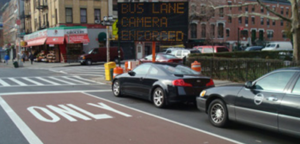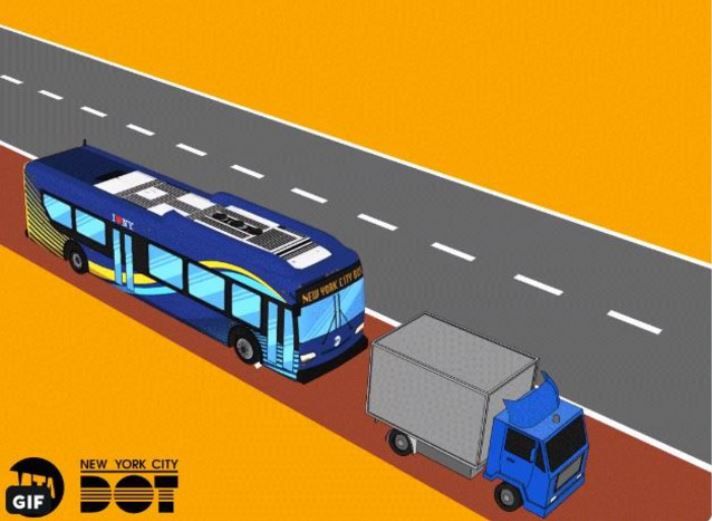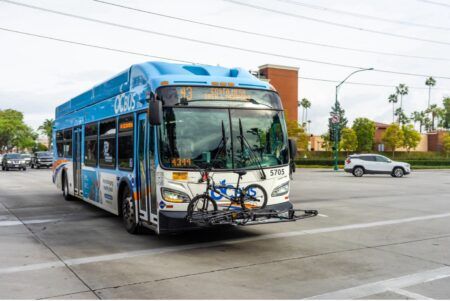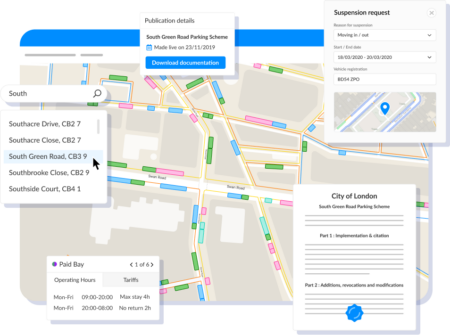Siemens Mobility has successfully launched an Automatic Bus Lane Enforcement (ABLE) system in New York City (NYC), representing the first-ever application of the company’s ALPR (Automated License Plate Recognition) technology to be mounted on buses.
The ABLE systems are installed on 123 of NYC’s Metropolitan Transportation Authority (MTA) M15 Select Bus Service buses that operate on bus lanes benefitting more than 44,000 daily customers. The technology is playing a key part in the city’s drive to improve bus speed and efficiency and to keep traffic moving on its most congested streets. A camera mounted directly on an operating bus immediately captures violations, where vehicles are stopped in the bus-only lanes, that would have otherwise required substantially more surrounding static camera infrastructure in order to capture the same information. The bus-mounted cameras augment the NYC Department of Transportation’s (NYCDOT) existing network of stationary fixed-position cameras that monitor traffic and capture vehicles that do not make the first available turn off a bus lane. The two systems work in tandem to ensure that violators are not fined twice for the same offense.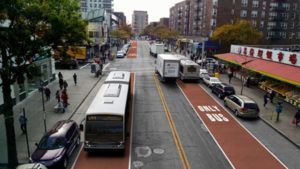
The ABLE application features Siemens’ LaneWatch cameras to capture license plate details of vehicles that obstruct bus lanes, together with advanced video capabilities that record photographs, videos and location information. Motorists who block a bus lane are subject to a fine of US$50 for the first violation. For additional violations within a 12-month period, fines are US$100 for a second offense, US$150 for a third offense, US$200 for a fourth offense, and US$250 for a fifth violation and each subsequent one within a 12-month period. Proven in multiple projects worldwide, Siemens’ LaneWatch cameras provide transport authorities and highways managers with a highly effective enforcement solution, making use of automatic license plate recognition software in combination with advanced image processing, to deliver robust detection and identification of vehicles for traffic enforcement purposes.
“New York City is one of the most challenging traffic environments in the world. We were able to combine and adapt GPS, Geo-fencing and ALPR into an innovative and much more efficient solution, ensuring the city’s buses are running more efficiently, without being impeded by other vehicles, in bus-only lanes,” said Michael Peter, CEO of Siemens Mobility. “By improving availability in the lane, it reduces commutes and can improve passenger experience on the more than two million daily bus trips served by their system”
“Our digital solutions are enabling mobility operators worldwide to make their networks more intelligent and ultimately deliver an enhanced experience for road users. ABLE is a perfect example of how an innovative solution can help solve a real and growing problem for traffic managers in major cities. New York’s leadership in embracing innovative technologies like this will not only be improving the commute for the millions of transit passengers who ride MTA buses, but also helping to mitigate traffic congestion and optimize travel time and safety, benefiting road users who will spend less time sitting in traffic.”